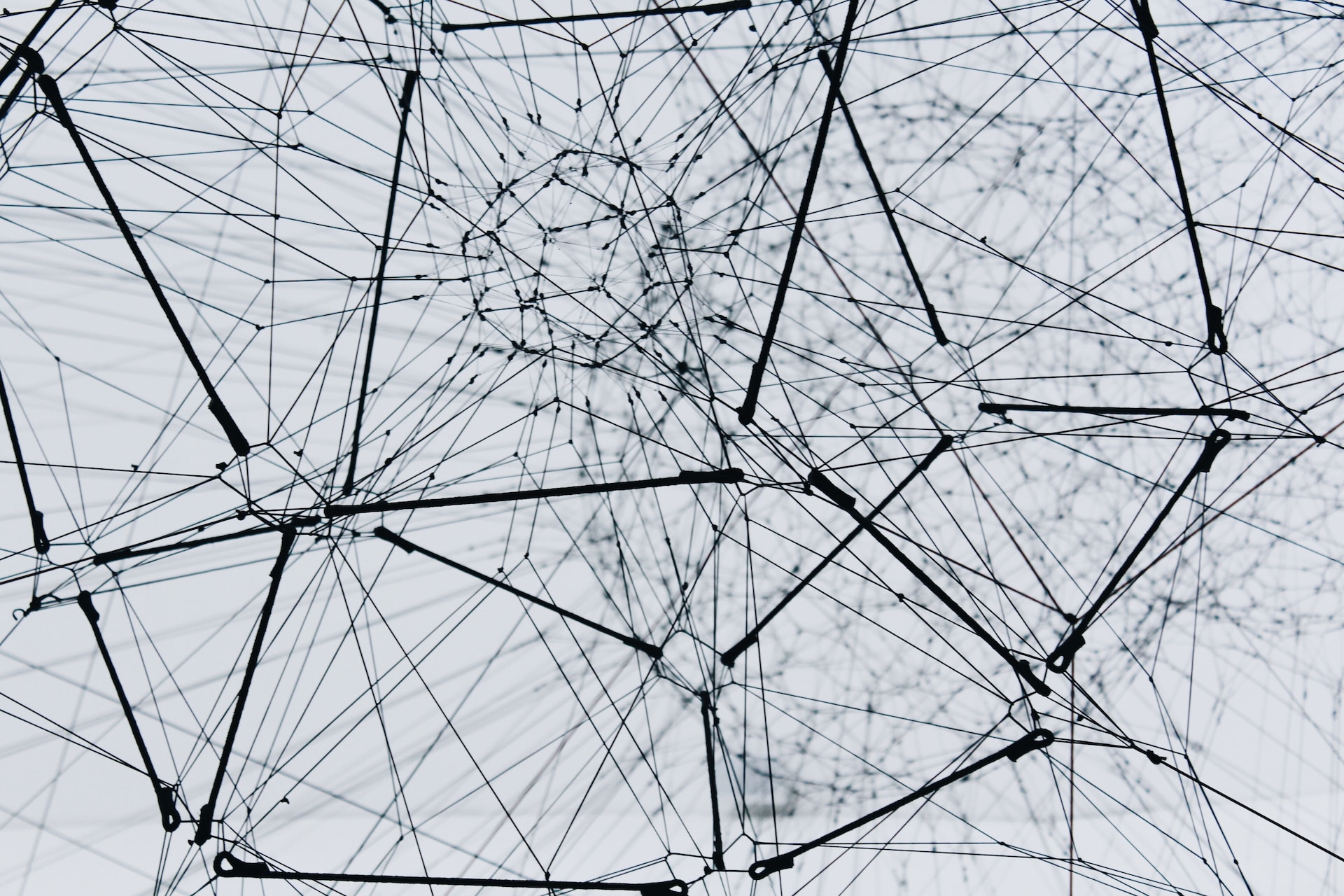What Is Progressive Decentralization?
 Emmanuel Awosika
Emmanuel AwosikaTable of contents

From its early days, decentralization has been web3’s raison d'être—Bitcoin enabled decentralized payments, while Ethereum provided a decentralized computation layer for applications. The success of DAOs (decentralized autonomous organizations) and the DeFi (decentralized finance) industry further demonstrates how decentralization—facilitated by blockchains—can create novel business models, foster community ownership of protocols, and align the interests of platforms and users.
But, like everything else, decentralization has its drawbacks. For example, traditional companies often start with loose structures, but become centralized over time to foster efficient planning and implementation, focused product vision, and well-defined organizational structures. Decentralization requires removing centralized control while ensuring organizations don't suffer from problems centralization was designed to correct.
For crypto-native businesses, starting out decentralized can be very difficult—if not impossible. This is where progressive decentralization—the idea of decentralizing over time instead of doing it immediately—can help. In this guide, I discuss progressive decentralization, explain what it means for web3 projects, and highlight how different projects across web3 are embracing this concept.
The meaning of progressive decentralization
Progressive decentralization is the process of relinquishing centralized control of a particular resource, system, or organization over time. An example of progressive decentralization is gradually revoking privileged permissions over a protocol and transferring decision-making powers to a distributed network comprising members of the protocol’s community (e.g., users and developers).
Progressive decentralization favors approaching decentralization in phases instead of attempting to achieve sufficient decentralization from the onset. This is important because decentralization, if handled improperly, can create more problems than it solves. For example, without a central actor coordinating economic interactions in a decentralized protocol, users may be forced to pay the price of anarchy.
Why progressive decentralization is crucial for web3 projects
Today, early-stage companies adopt the lean startup methodology—a business model that emphasizes rapid iteration, innovation, and experimentation (instead of complex planning) on the road to product-market fit. Crypto products are no different and must iterate quickly based on user feedback and performance analyses. As a result, many web3 projects tend to rely on small, centralized teams in the early phases to drive efforts at achieving product-market fit and creating sustainable business models.
But just because a web3 project starts out centralized doesn’t mean it must stay that way forever. Progressive decentralization ensures product teams are well-equipped to drive business goals early on while creating processes and infrastructure to support decentralization in the future. This allows protocols—having achieved maturity—to transition into decentralized entities owned and operated by users (with minimal reliance on the founding team to coordinate activities).
How does progressive decentralization work?
Progressive decentralization can take many forms depending on an organization’s objectives. But first, it helps to understand the benefits of decentralization before looking into strategies for achieving it. Web3 projects can benefit from sufficient decentralization in the following ways:
1. Resilience and robustness: Decentralized protocols have historically been harder to disrupt and shut down—whether by nation-states or motivated groups and individuals. That’s because such protocols are designed to operate without single points of failure or choke points that malicious actors can exploit.
2. Community ownership and participation: Putting a protocol’s community in charge of operations typically incentivizes users to play active roles in the protocol’s development and future growth. Moreover, access to diverse perspectives and voices means projects can make more informed decisions that benefit the majority of users—not a narrow subset of stakeholders.
3. Value distribution: Decentralized networks redistribute more economic value to participants than their centralized counterparts. For example, a decentralized protocol might financially reward external contributors (e.g., developers), or distribute a share of protocol fees to users.
By sharing value with the community, decentralized protocols create a virtuous cycle of sorts: user commitment and contributor participation increases, directly benefiting the protocol’s growth, which increases the economic value redistributed to community participants. In short, decentralized protocols play a positive-sum game that benefits all parties instead of a zero-sum game that solely benefits the business.
4. Accountable leadership: In a typical organization, information asymmetries (among other factors) prevent the wider community from holding leaders to account for making certain decisions. Conversely, decentralization increases transparency and accountability, ensuring the community members can hold protocol teams accountable for their actions.
Another benefit of decentralized governance and decision-making is that users are aware of the rationale behind decisions affecting the protocol. This empowers users to make informed decisions about whether to withdraw or lend their support for certain proposals (depending on the extent to which these decisions align with their interests).
A framework for progressive decentralization
Having explained why decentralization matters, we can now evaluate the different ways in which web3 projects can progressively decentralize:
Infrastructure
When building blockchain applications, some elements of the development stack (e.g., off-chain storage or node infrastructure) may be centralized. Centralized infrastructure can provide efficiency, customizability, ease of use, and cost-effectiveness—things early-stage companies need to build viable products.
But, as a project matures, it becomes necessary to start thinking about decentralizing critical infrastructure. For starters, this can improve fault tolerance, reduce the risk of censorship, and increase reliability for users. Using decentralized infrastructure also prevents platform lock-in and provides more flexibility for development teams when choosing what services to use.
Below are some hypothetical examples of how a web3 project could gradually decentralize its infrastructure:
A decentralized social networking protocol might move from using centralized databases (e.g., Amazon S3) to using distributed, peer-to-peer storage platforms like Arweave, Filecoin, IPFS, and Ceramic for data storage
A DeFi protocol may use a centralized node provider for blockchain access and later shift to a decentralized infrastructure network comprising different blockchain node providers
That said, progressive decentralization doesn’t apply to base-layer blockchains, like Ethereum and Bitcoin, whose value lies in being sufficiently decentralized from genesis. In comparison, Layer 2 (L2) blockchains (e.g., rollups) may adopt a progressive decentralization model; an example is a centralized sequencer for low-latency execution of transactions before shifting to decentralized sequencing to mitigate censorship and avoid downtime owing to failure of a centralized sequencer node.
Governance and decision-making
As explained, building a web3 product demands quick iteration and fast implementation of design decisions in the early stages. Thus it is non-ideal to have a large group of people making decisions about a product at this time (aka “design by committee”). Rather, project teams should be lean and comprise individuals with the experience, expertise, and drive to steer product development forward.
However, once a project achieves some notion of product-market fit (reflected in daily protocol revenue, TVL metrics, etc.), it may start transitioning into community-led governance. Instead of core teams deciding behind closed doors, the decision-making process is public and open to all members of the community. Governance decisions may cover technical aspects of a protocol (e.g., upgrades, freezes/shutdowns, and parameter/variable settings) and non-technical matters (e.g., treasury allocations).
Scaling decentralized governance and crowdsourced decision-making can be difficult, but not if teams channel efforts toward making it work. This may mean documenting internal processes to give context for governance decisions, for example, or using tools that enable members to signal preferences and reach consensus on proposals securely and transparently.
Establishing decentralized governance requires locking away special powers conferred on core team members at the beginning. Community ownership is hardly useful if a powerful minority (e.g., project founders) can override the majority’s wishes.
Furthermore, it is important to give vocal minorities the freedom to exit the protocol if they disagree with a particular decision. This may involve imposing delays on the implementation of governance decisions, which protects users against being forced to accept unfavorable proposals.
A high-level of DeFi protocol Compound’s decentralized governance mechanism. (Source)
Finances
Web3 promotes the redistribution of the value generated by protocols to those responsible for creating that value (i.e., users and contributors). Therefore, projects need to develop mechanisms that align economic interests of users with the protocol. An example might be airdropping tokens to community members and letting token-holders earn a cut from protocol fees.
Beyond value distribution, protocols must also enshrine processes for the community to (transparently) decide on financial issues, such as allocating funds to protocol development efforts, rewarding core team members and external contributors, etc. Setting up a protocol treasury managed by a multisig wallet (composed of signers elected by the community) is a popular approach among DAOs and DeFi projects. This arrangement promotes auditability and prevents financial mismanagement that can occur in the absence of centralized governance.
Human resources
For crypto-native businesses, progressive decentralization may involve transitioning from being “lean startups” to “open-source organizations”. This means the project no longer relies exclusively on the efforts of the core team but instead taps into the wider community for individuals to steward technical and non-technical roles.
For this part of progressive decentralization to work, teams need to lay the groundwork early into the project. Core team members can set up roles and internal processes in a way that makes it possible for others to take over responsibilities, for example. Building and collaborating openly can also reduce information asymmetry and reduce the barrier to entry for new contributors.
This phase of progressive decentralization also requires investing in best practices for running open-source projects. Creating good documentation outlining a project’s objectives, contribution guidelines, and code of conduct (among others) is usually a good place to start. Developing mechanisms rewarding the efforts of contributors (e.g., using a reputation system) is also important—incentives can encourage participation where appeals to altruism fall short.
Case studies of progressive decentralization in web3
Case studies of progressive decentralization in web3
Infura
Infura is a great example of how a web3 product with startup roots can progressively decentralize. Initially created as a software-as-a-service (SaaS) platform to provide users and developers with access to blockchain data, Infura is building a decentralized infrastructure network to create a robust and resilient RPC layer for Web3.
“Infura’s Path to Decentralization” provides a high-level overview of Infura’s decentralized infrastructure network. Here, Infura’s current service will exist in parallel with selected node infrastructure providers (“Node Operators”)—allowing developers to route RPC calls through multiple points (via “Ingress Operators”) instead of relying on a centralized provider. Not only does this reduce the risk of downtime for dapps, but it also protects end-users against the risk of censorship and discrimination—ideals tightly woven into the fabric of web3.

Proposed architecture of Infura’s Decentralized Infrastructure Network (DIN). (source)
Astute readers will notice that Infura’s approach to decentralization resembles infrastructural decentralization, which I discussed earlier. Elements of decentralized governance also exist in the plan—for instance, the task of monitoring and evaluating node operators is handled by a decentralized body of “Watchers” equipped with the power to penalize operators that experience excessive downtime.
Uniswap
One of the first DeFi projects to achieve product-market fit, Uniswap transitioned to community-led governance after announcing the release of UNI, a governance token endowing holders (including members of the community) to propose and ratify proposals affecting the protocol’s future. And while Uniswap’s core team is still involved with the project, development of future iterations of the protocol have seen greater involvement from members of the community—see this blog post on community contributions to Uniswap V4 for an example.
Despite becoming a community-owned product, Uniswap has remained profitable to date and recently surpassed trading volumes of centralized rival, Coinbase. This demonstrates the viability (and importance) of building sustainable applications without sacrificing web3’s ethos of open-source development and permissionless innovation.
Optimism and Arbitrum
Optimism and Arbitrum are the biggest Ethereum rollups today (by economic activity). Besides sharing similar technology and infrastructure, both projects have displayed commitment to adopting progressive decentralization in various forms:
Arbitrum airdropped ARB tokens to community members and contributors earlier this year and formed the Arbitrum DAO to coordinate future protocol development efforts, manage treasury funding and allocation, and provide an open space for discussions on issues affecting the protocol.
Optimism has taken similar steps—forming the Optimism Collective after announcing the distribution of a governance token (OP) to users, founding team members, and ecosystem contributors. Optimism’s core team has also outlined the protocol’s vision for progressively decentralizing key parts of the infrastructure stack to increase the network’s robustness and security.

Optimism’s technical decentralization roadmap. (source)
MetaMask
MetaMask (a web3 wallet) recently announced the (beta) release of the Snaps SDK, which will allow developers to build standalone apps (plugins) that users can install to customize and enrich the functionality of MetaMask’s wallet application. Snaps execute in a sandboxed environment—to prevent plugin bugs from compromising the security of assets stored in the main wallet—and can only run scripts approved by end-users. Below are some examples of Snaps from the official Snaps directory:

The “progressive” in progressive decentralization for MetaMask here means certain aspects of the decentralization process will see some centralized control initially. To illustrate, users are currently limited to installing Snaps that have been vetted for security by MetaMask’s in-house team; but the long-term plan—as explained in the announcement post—is to lift this restriction and pave way from permissionless innovation, where anyone can create a Snap and users can install it without relying on MetaMask's approval.
Some would argue decentralization at this layer of web3 isn’t necessary (“you can’t just decentralize everything!”) or possible (“how do you decentralize a primarily user-facing product like a wallet?”). However, as founder, Dan Finlay, discusses in a post, it is both feasible to decentralize a web3 product like MetaMask—it just takes work—and necessary, especially if we want to avoid reintroducing web2’s walled gardens and lack of user input in product development and application UX.
This form of decentralization also exemplifies the framing of progressive decentralization in crypto-native applications as positive-sum game:
- MetaMask’s product team can’t ship every feature—even ones with significant demand from users—due to constraints like limited manpower and the need to prioritize safety (an important consideration, given that wallets are responsible for holding valuable assets like tokens and NFTs, and software bugs can cause non-trivial losses); if MetaMask operated as a pure, Big Tech-esque (closed-source) product, the only viable option would be to limit users to the functionality the team is able to provide—but progressive decentralization means it can do better to deliver on web3’s promise of decentralizing digital infrastructure and encouraging composable and open innovation.
Using the MetaMask Snaps SDK, any developer can build new features on top of the MetaMask wallet application, and users can install those features to customize the wallet experience. For example, transaction insight Snaps protect against malicious attempts to drain wallets by spoofing legitimate websites, and interoperability Snaps allow users to connect MetaMask with non-EVM (Ethereum Virtual Machine) blockchains).
With new Snaps-powered functionalities, MetaMask is able to keep users happy without placing additional burdens on its product team to ship more features at a rapid place (which has also has the nice property of reducing the likelihood of software bugs). In return, third-party developers behind various Snaps get access to MetaMask’s impressive user base (100M users and counting), without having to build a rival product from scratch.
Reducing user churn (and adding more users) means more opportunities to sustain or increase MetaMask's usage, which may improve the product's overall bottom-line. With (potentially) increased revenue, MetaMask can improve its core product and even fund other proposals to build new Snaps (e.g., through MetaMask Grants DAO) that contribute positively to the experience of using MetaMask.
In other words, it’s a win-win for everyone involved.
Conclusion
Progressive decentralization is still poorly understood and there’s hardly a one-size-fits-all solution for achieving it; moreover, decentralization—especially when it touches mission-critical components of a protocol’s architecture—can take time to implement safely. Ultimately, web3 projects must approach decentralization in unique ways whilst making sure it doesn’t stifle growth and innovation, or introduce undesirable second-order effects.
This article has provided a useful “minimum viable framework” project leads in web3 can use to guide progressive decentralization efforts. Still, those in search of more comprehensive analyses may want to read Progressive Decentralization: A Playbook for Building Crypto Applications, Sufficient Decentralization: A Playbook For Web3 Builders and Lawyers, and Whole Crypto Catalog: Progressive Decentralization. These are excellent resources for crypto founders, developers, and enterprises thinking about decentralization and provide a more holistic framework for making specific decisions about organizational components.
Cover photo by Alina Grubnyak on Unsplash
Subscribe to my newsletter
Read articles from Emmanuel Awosika directly inside your inbox. Subscribe to the newsletter, and don't miss out.
Written by

Emmanuel Awosika
Emmanuel Awosika
I am a freelance writer covering the latest trends in the blockchain industry. I explore the ways blockchain technology is revolutionizing business, accelerating the development of decentralized corporate structures, and improving operations for large-scale enterprises.